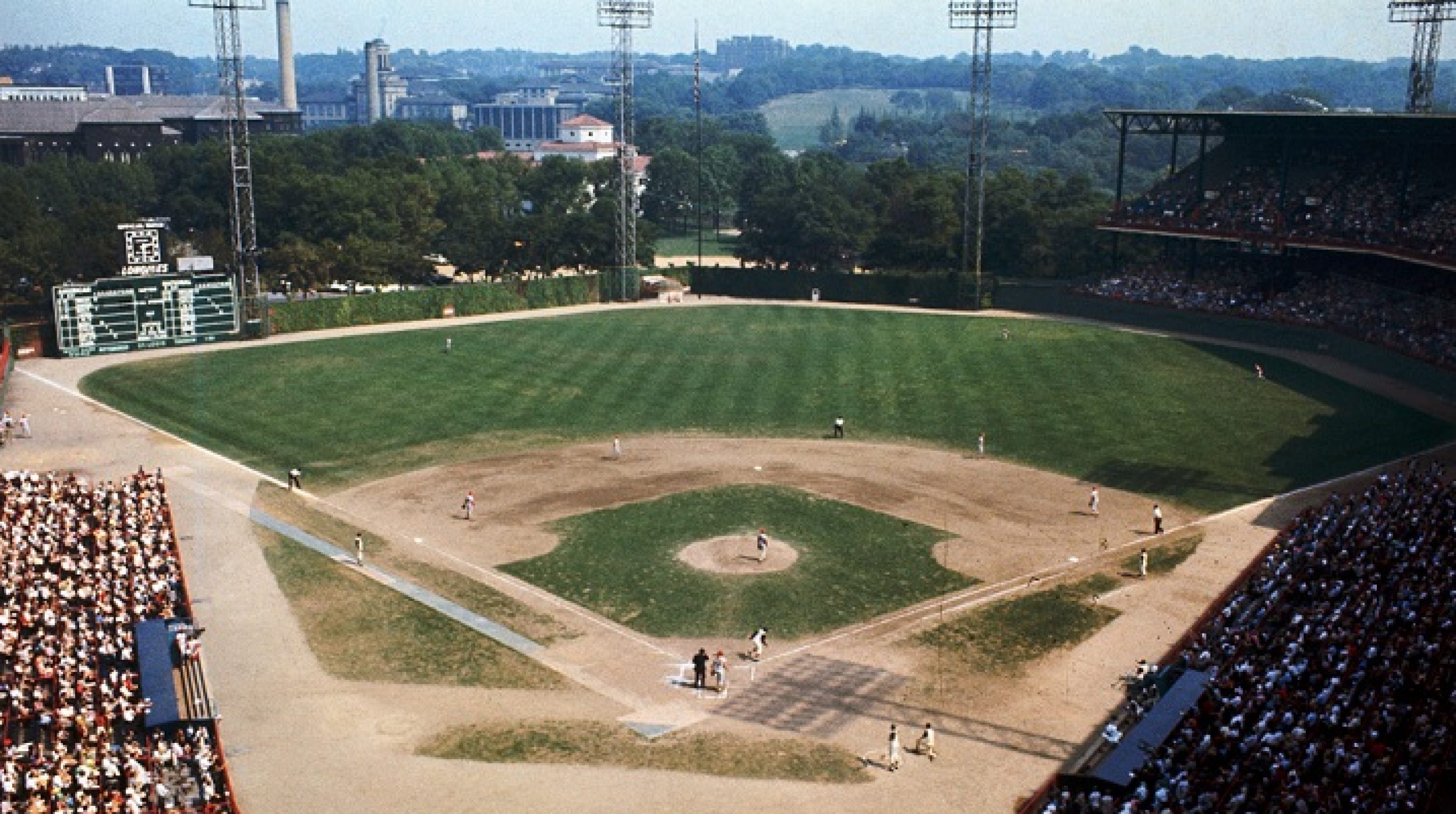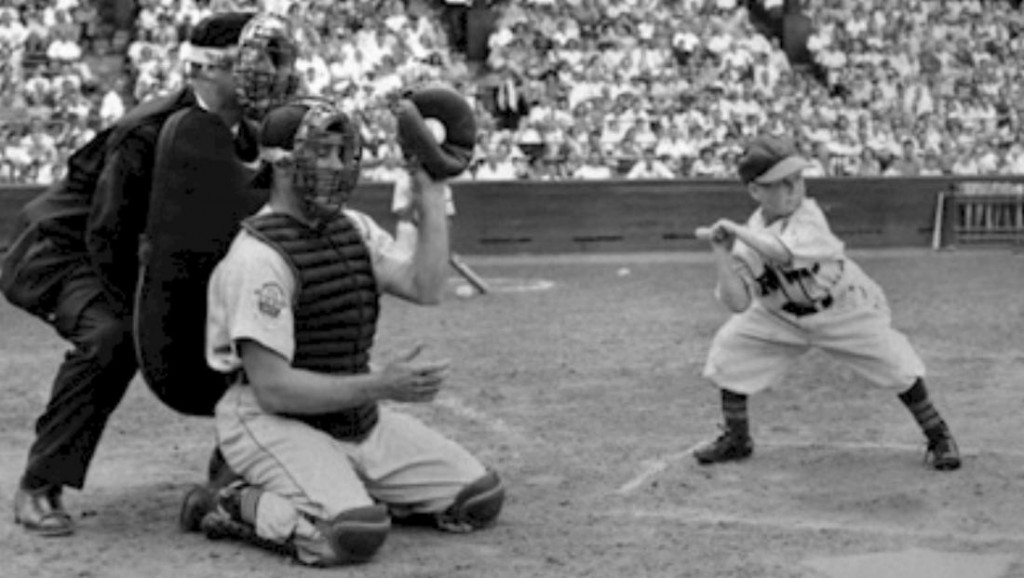Panoramic Photo Above:
Forbes Field, Pittsburgh

Baseball History Comes Alive Now Ranked As a Top Five Website by Feedspot Among All Baseball History Websites and Blogs!
(Check out Feedspot's list of the Top 35 Baseball History websites and blogs)
Guest Submissions from Our Readers Always Welcome! Click for details
Scroll Down to Read Today’s Essay
Subscribe to Baseball History Comes Alive for automatic updates.
“The St. Louis Browns’ Last Game,” Part Two
Today we continue with Part Two of Matt Kastel’s three-part series on the St. Louis Browns. Here’s a link to Part One: The St. Louis Browns, the Early Years
Enter Bill Veeck
Bill Veeck, perhaps the most famous and infamous owner in MLB history, entered the picture as Browns’ owner in 1951. Veeck, never short of provocative ideas, was however perpetually short of capital to operate the team.
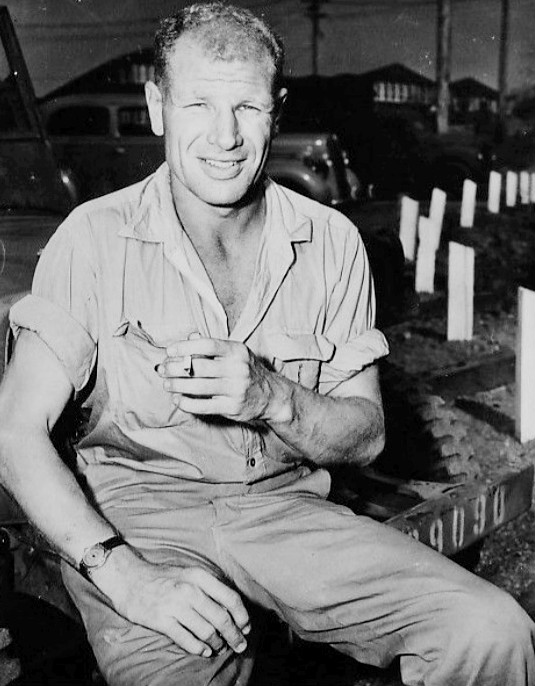
His initial plan of forcing the more popular Cardinals out of town sounds fantastical at first but almost succeeded. The Browns owned Sportsman Park and the Cardinals were tenants, so Veeck outfitted the stadium in strictly Browns paraphernalia and then hired all the Cardinals announcers, including Dizzy Dean and Rogers Hornsby.
In 1953 when Cardinals owner Fred Saigh was convicted of tax evasion and had to put the Redbirds up for sale it looked like Veeck would win the turf war, as a group from Houston was interested in buying the Cardinals. Anheuser-Busch stepped in at the last minute and bought the team. Not only would the more popular Cardinals stick around in St. Louis, but the new ownership had resources well beyond Veeck’s ability to compete.
By this point, the Browns’ fate was sealed, and outside of one of Veeck’s famous gimmicks or two, the team was biding its time in St. Louis. Veeck’s most memorable stunt came on August 19, 1951, when he put 3’7” Eddie Gaedel into a game as a pinch hitter with the number 1/8 on his back. The Browns had hired Gaedel via a theatrical agency.
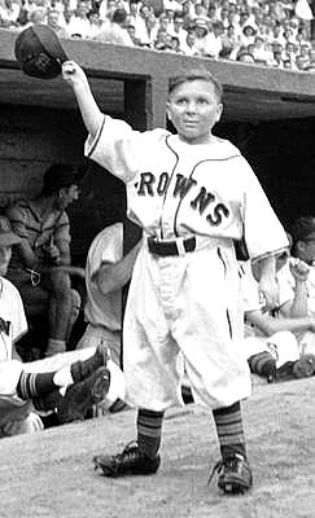
Ironically, the uniform was that of the Browns’ nine-year-old bat boy, Bill DeWitt, currently the managing partner of the St. Louis Cardinals. Today his old Bat Boy uniform is in Cooperstown, but according to Dewitt it was almost lost to history, “We took it home and put it in the front room closet. And I used it for Halloween. And my sister used it for the next two Halloweens.”
The game in which Gaedel famously appeared was the second game of a doubleheader. With 18,369 fans in the house, it was the largest crowd the Browns had in four years. In typical Veeck fashion, each fan received a free beer and cake for attending, and in between games, there were trampolinists and jugglers to entertain the crowd. Four Browns players, including Satchel Paige, played musical instruments at home plate. At one point Eddie Gaedel popped out of a large cake to celebrate the American League’s 50th birthday and Browns’ sponsor Falstaff Brewing Company. At the time, few knew Gaedel’s coming out of a cake was a foreshadowing for what would happen in the second game of the doubleheader. His appearance as a player was a tightly held secret that would soon stun those gathered.
During the second game, Gaedel stepped out of the dugout to pinch hit, swinging three toy bats over his head. When Gaedel walked to the plate, the umpire immediately asked the Browns manager to produce a contract to prove that Gaedel was legit to play. He was, sort of. Veeck had signed Gaedel right before the Commissioner’s Office closed for the weekend, and the game was on a Sunday, and the Browns’ crafty owner knew the Commissioner’s office wouldn’t review the contract till Monday. Ever since, thanks to Veeck, a player’s contract now has to be approved by the league, before a player can take the field.
Under strict instruction to get into a crouch at the plate and not swing at any pitches, Gaedel easily walked on four pitches in his only at-bat. On his way down to first base, Gaedel stopped twice for bows from the crowd giving him a standing ovation. “For a moment, I felt like Babe Ruth,” he said.
This wasn’t Gaedel’s only association with Veeck. Later, when Veeck owned the White Sox, he hired him to dress up as a space alien and deliver a ‘ray gun’ to Chicago White Sox’s Luis Aparicio and Nellie Fox at Comisky Park. He also hired him as an usher, as Gaedel was so short he wouldn’t block customers’ sightlines during a game. This gig lasted one game before he quit saying, “My feet couldn’t stand it.”
Unfortunately, Gaedel died in 1961 at the age of 36. It is believed he was walking home from a bowling alley and got assaulted. An examination showed Gaedel had bruises on his hands and knees and discoloration on the left side of his face. Gaedel may have also suffered a heart attack during the alleged assault. Bob Cain, the pitcher against Gaedel in 1951, was the only player to attend his funeral.
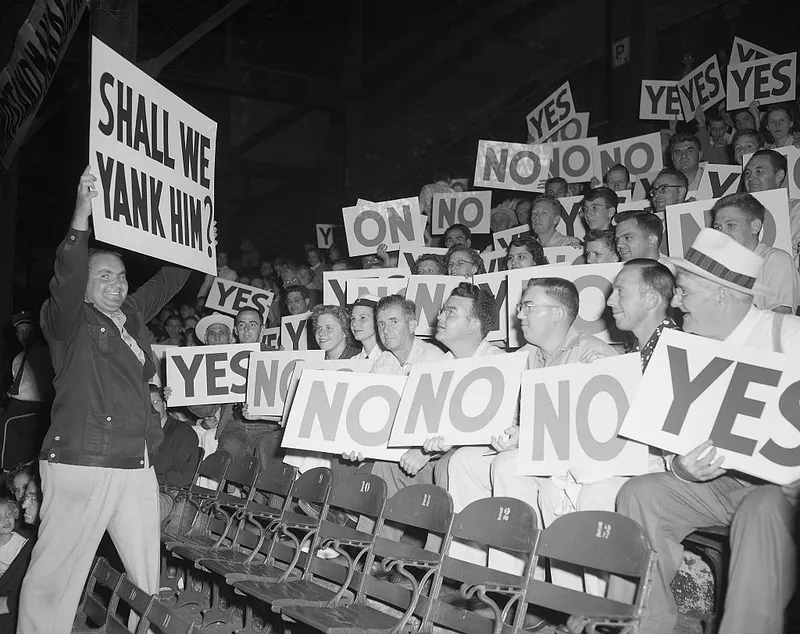
Only five days after the Gaedel game, Veeck was up to his old tricks again, this time with “Grandstand Manager’s Night”, where 1,000 fans got to make all the game decisions while Browns manager, Zack Taylor, sat behind the team’s dugout enjoying the game while smoking a pipe in a rocking chair in civilian clothes.
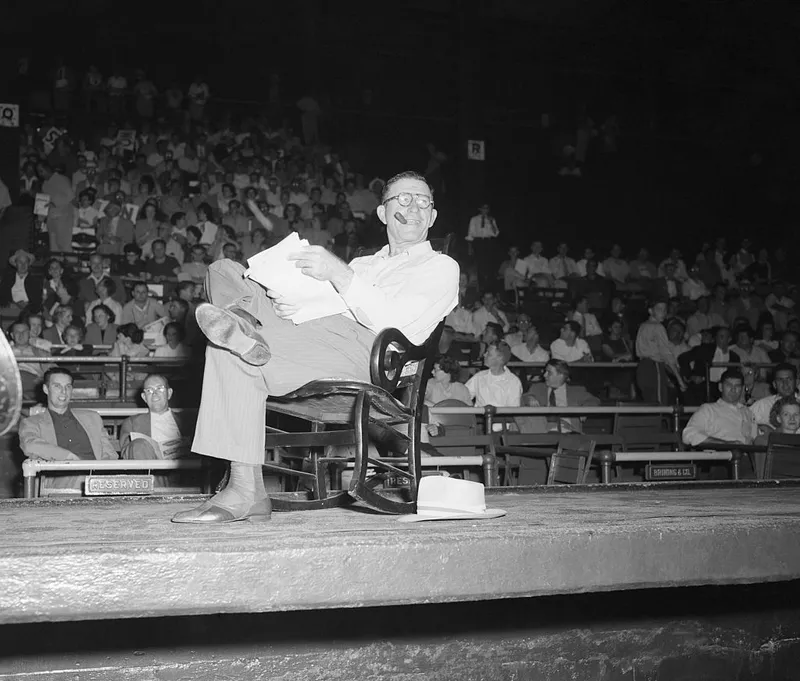
Meanwhile, 1,000 fans sitting in a nearby special section got to vote with placards, either “yes” or “no” to key decisions. They even got to select that night’s starting lineup. The Grandstand Managers seemed adept at their job, as the Browns won 5-3 and made several key decisions correctly, including playing the infield back, which led to Pete Suder of the visiting A’s hitting into an inning-ending double play.
Perhaps the Browns, who were 38-81 at the time, should have kept The Grandstand Managers as a permanent fixture.
Veeck first tried to move the Browns back to their original home in Milwaukee, where the city had recently built Milwaukee County Stadium as an inducement to a Major League Baseball team. However, the Boston Braves beat him to the punch and moved their franchise out to Wisconsin.
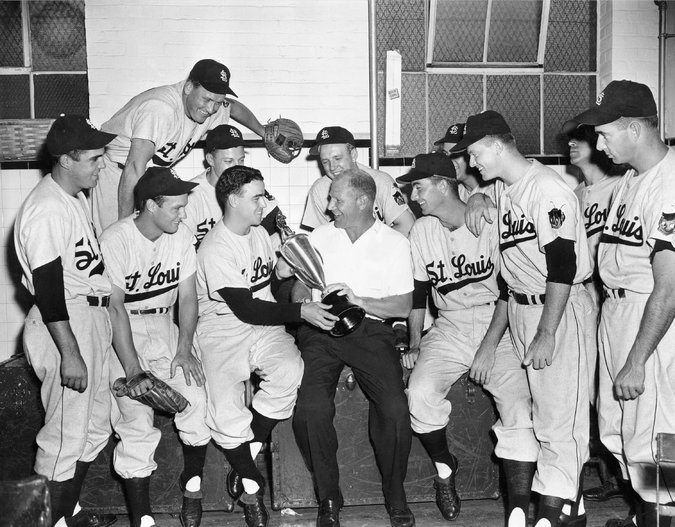
Plan B was Baltimore. Veeck’s original concept was to retain 40% of the ownership and be the managing partner. Major League Baseball had other ideas. Veeck’s various stunts, gimmicks, and challenges of baseball’s hierarchy had rubbed many of his fellow owners the wrong way. When it came time for the league to vote on the move, Veeck fell two votes short.
Seeing the writing on the wall, he sold his complete ownership stake. In 1954 the Baltimore Orioles as we know them today, were born.
Matt Kastel
Subscribe to our website, Baseball History Comes Alive with over 1500 fully categorized baseball essays and photo galleries, now surpassing the one million hits mark with over 1,225,000 hits and over 950 subscribers: https://wp.me/P7a04E-2he
